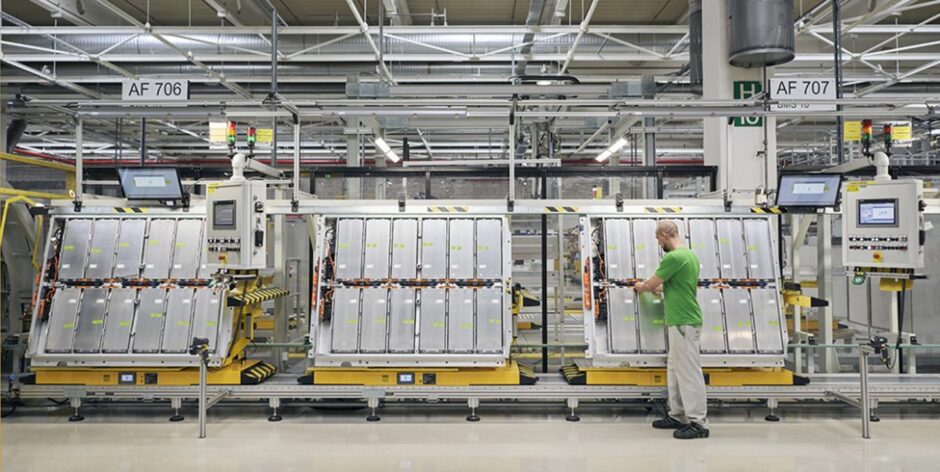
Remarkable strides are being made in the world of batteries with super-fast charging and large solid-state units at the threshold of commercial reality.
As the switch to electric vehicles (EVs) accelerates, so too does the demand for battery charging that takes no longer than filling up with petrol or diesel and the local forecourt.
Cornell University engineers in the US claim to have just beaten the five minutes charging barrier by developing a new lithium battery that is faster than anything else on the market, whilst maintaining stable performance over extended cycles of charging and discharging.
They believe the indium-electrodes-based breakthrough could alleviate “range anxiety” among drivers who worry electric vehicles cannot travel long distances without a time-consuming recharge.
“Range anxiety is a greater barrier to electrification in transportation than any of the other barriers, like cost and capability of batteries, and we have identified a pathway to eliminate it using rational electrode designs,” said Lynden Archer, professor of engineering and dean of Cornell’s College of Engineering, who oversaw the project.
“If you can charge an EV battery in five minutes, I mean, gosh, you don’t need to have a battery that’s big enough for a 300-mile range. You can settle for less, which could reduce the cost of EVs, enabling wider adoption.”
Lithium-ion batteries have become the most popular choice for powering EVs, laptops, smartphones and much else besides. Mostly lightweight, reliable and relatively energy-efficient but slow to charge and lacking the capacity to handle large surges of current or deep discharges.
The Cornell team have identified the silvery-blue metal indium as an exceptionally promising electrode material for fast-charging batteries.
Indium is a soft metal, mostly used to make indium tin oxide coatings for touch-screen displays and solar panels.
The Cornell work demonstrates that indium has two crucial characteristics as a battery anode: an extremely low migration energy barrier, which sets the rate at which ions diffuse in the solid state; and a modest exchange current density, which is related to the rate at which ions are reduced in the anode.
The combination of those qualities – rapid diffusion and slow surface reaction kinetics – is essential for fast charging and long-duration storage.
“The key innovation is we’ve discovered a design principle that allows metal ions at a battery anode to freely move around, find the right configuration and only then participate in the charge storage reaction,” Archer said.
“The end result is that in every charging cycle, the electrode is in a stable morphological state. It is precisely what gives our new fast-charging batteries the ability to repeatedly charge and discharge over thousands of cycles.”
That technology, paired with wireless induction charging on roadways, would shrink the size – and the cost – of batteries, making electric transportation a more viable option for drivers.
However, that doesn’t mean indium anodes are perfect, or even practical.
“While this result is exciting, in that it teaches us how to get to fast-charge batteries, indium is heavy,” Archer said.
That being said, indium is relatively rare – around 0.1 parts per million of the Earth’s crust. That means it is slightly more abundant than silver or mercury but way behind lithium which, at 20 parts per million, is the 25th most abundant element.
Fortunately, it is generally found in ores of zinc and is produced mainly from residues generated during zinc ore processing.
Turning to solid state, leading EV manufacturers are rushing to develop the solid state automotive lithium battery which, Volkswagen, for example, claims could charge faster and last longer than current industry standards.
VW recently shared encouraging early test results for its solid-state battery cell developed with American partner QuantumScape Corp.
Solid-state batteries eliminate the flammable liquid found in most batteries today with a solid material, making them safer and smaller while apparently allowing vehicles to drive farther on a single charge. Charging times are said to be measured in minutes.
During trials, the VW/QuantumScape battery retained 95% of its storage capacity after over 1,000 charging cycles; which apparently equates to driving an EV about 311,000 miles. That would appear to bring the forever battery within reach.
Industry standards aim for only 80% capacity retention at 700 cycles.
Nissan and Toyota are at an advanced stage in their s/s EV battery development and plan to start production in 2028, opening the door to smaller, less expensive, more energy-dense and safer cells long-term.
Recommended for you

 © Supplied by Cornell University
© Supplied by Cornell University